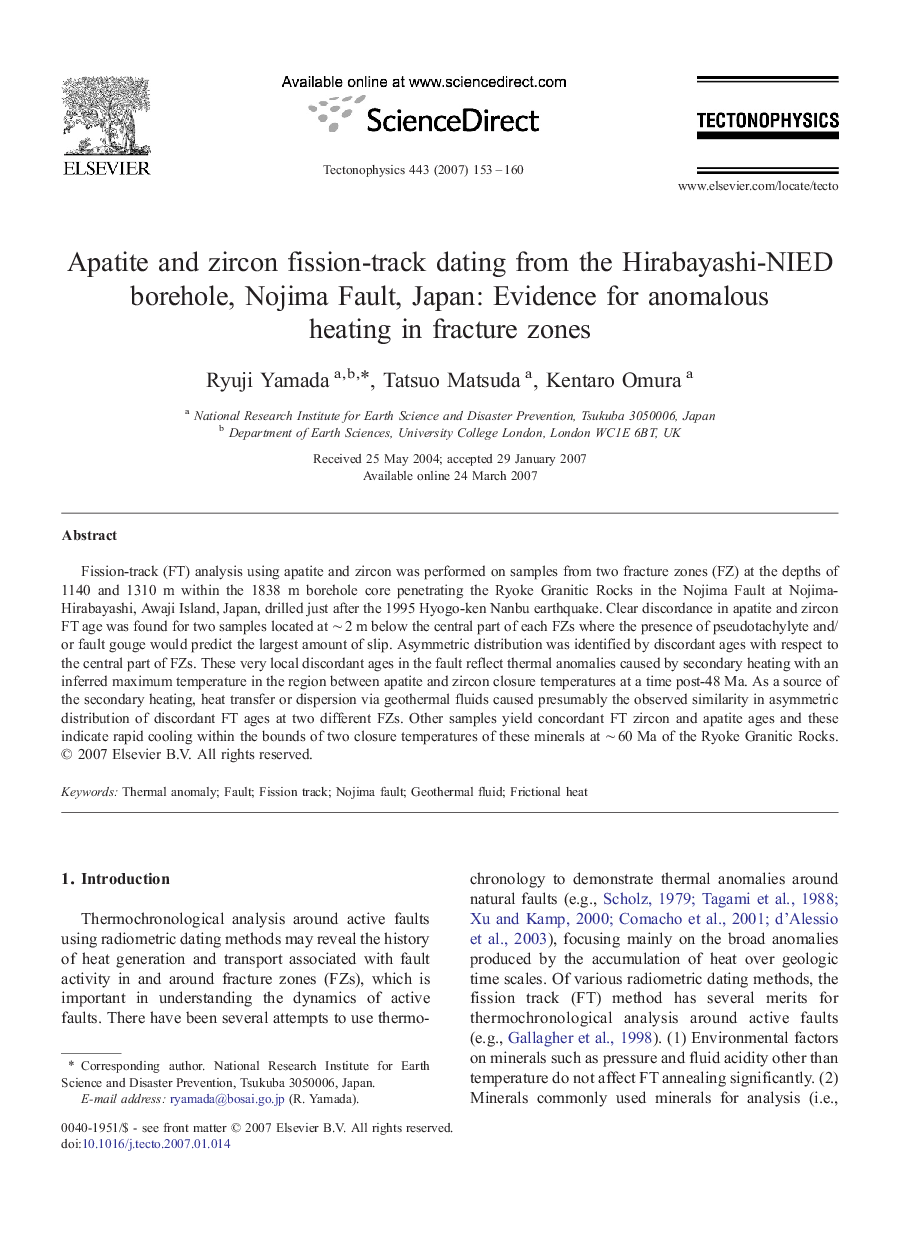| Article ID | Journal | Published Year | Pages | File Type |
|---|---|---|---|---|
| 4694784 | Tectonophysics | 2007 | 8 Pages |
Fission-track (FT) analysis using apatite and zircon was performed on samples from two fracture zones (FZ) at the depths of 1140 and 1310 m within the 1838 m borehole core penetrating the Ryoke Granitic Rocks in the Nojima Fault at Nojima-Hirabayashi, Awaji Island, Japan, drilled just after the 1995 Hyogo-ken Nanbu earthquake. Clear discordance in apatite and zircon FT age was found for two samples located at ∼ 2 m below the central part of each FZs where the presence of pseudotachylyte and/or fault gouge would predict the largest amount of slip. Asymmetric distribution was identified by discordant ages with respect to the central part of FZs. These very local discordant ages in the fault reflect thermal anomalies caused by secondary heating with an inferred maximum temperature in the region between apatite and zircon closure temperatures at a time post-48 Ma. As a source of the secondary heating, heat transfer or dispersion via geothermal fluids caused presumably the observed similarity in asymmetric distribution of discordant FT ages at two different FZs. Other samples yield concordant FT zircon and apatite ages and these indicate rapid cooling within the bounds of two closure temperatures of these minerals at ∼ 60 Ma of the Ryoke Granitic Rocks.
